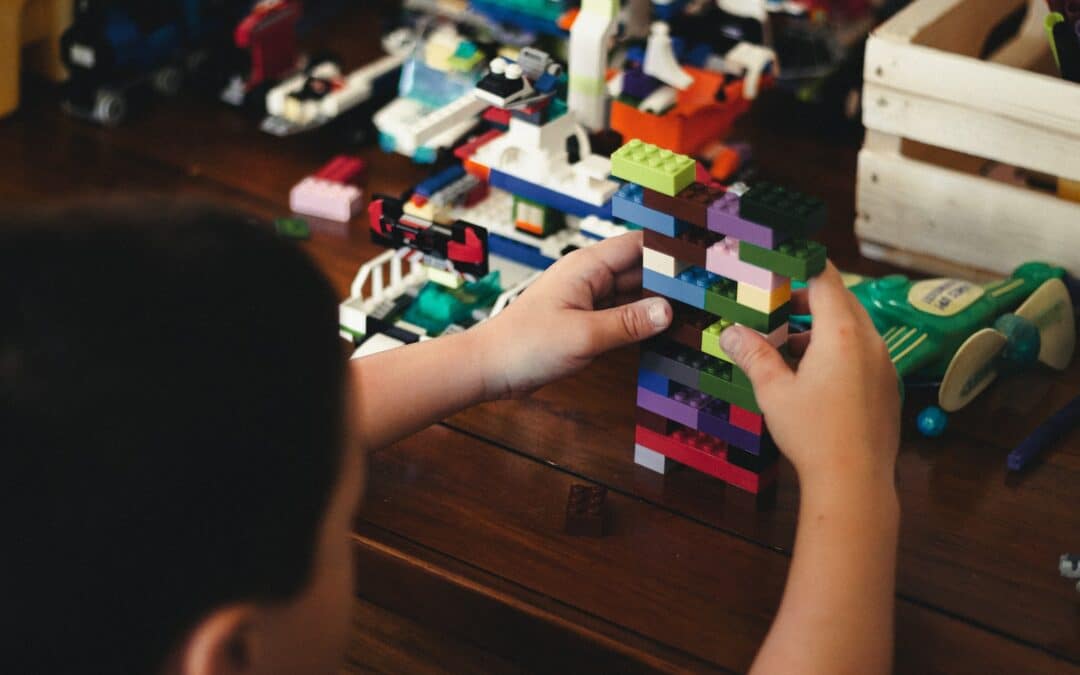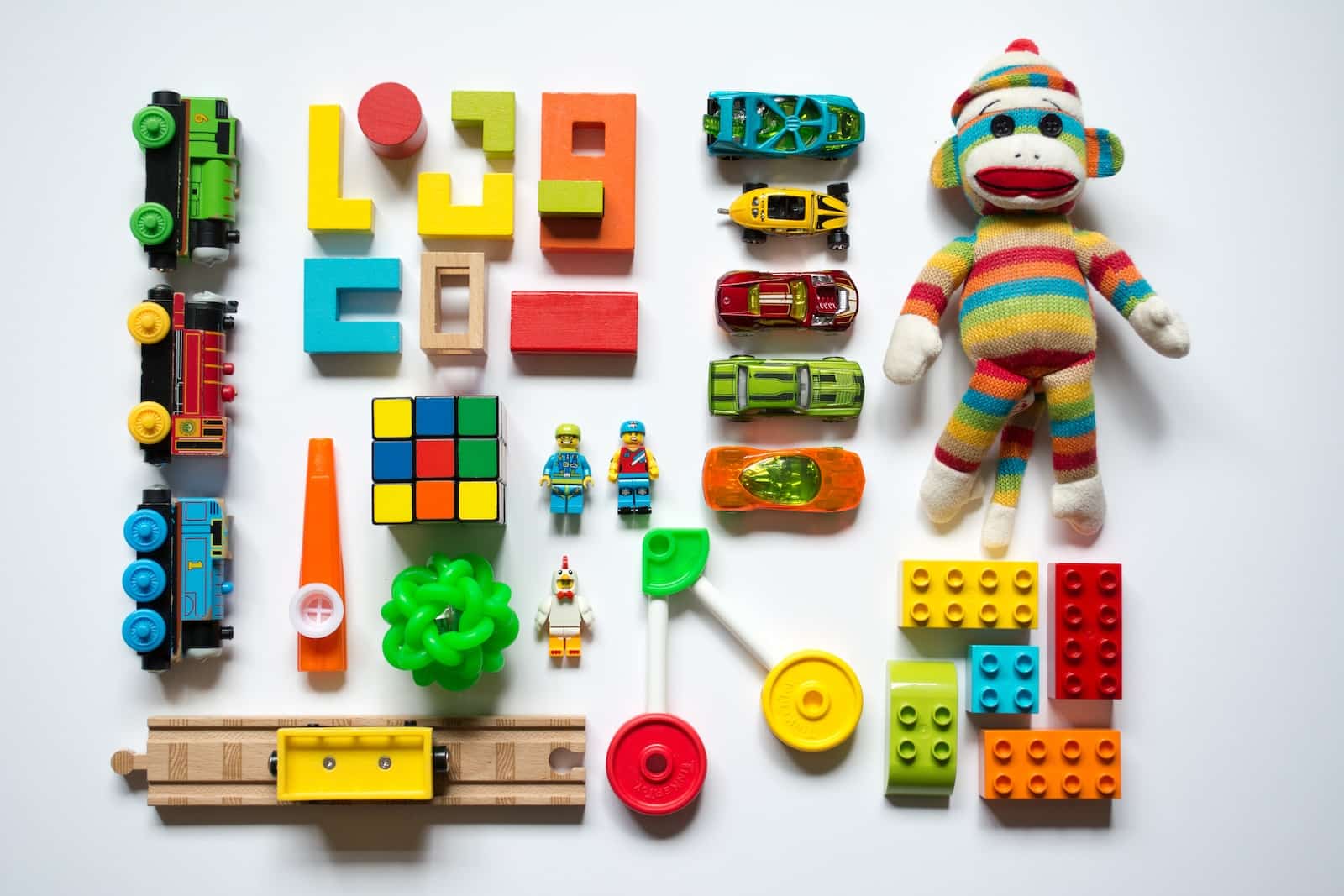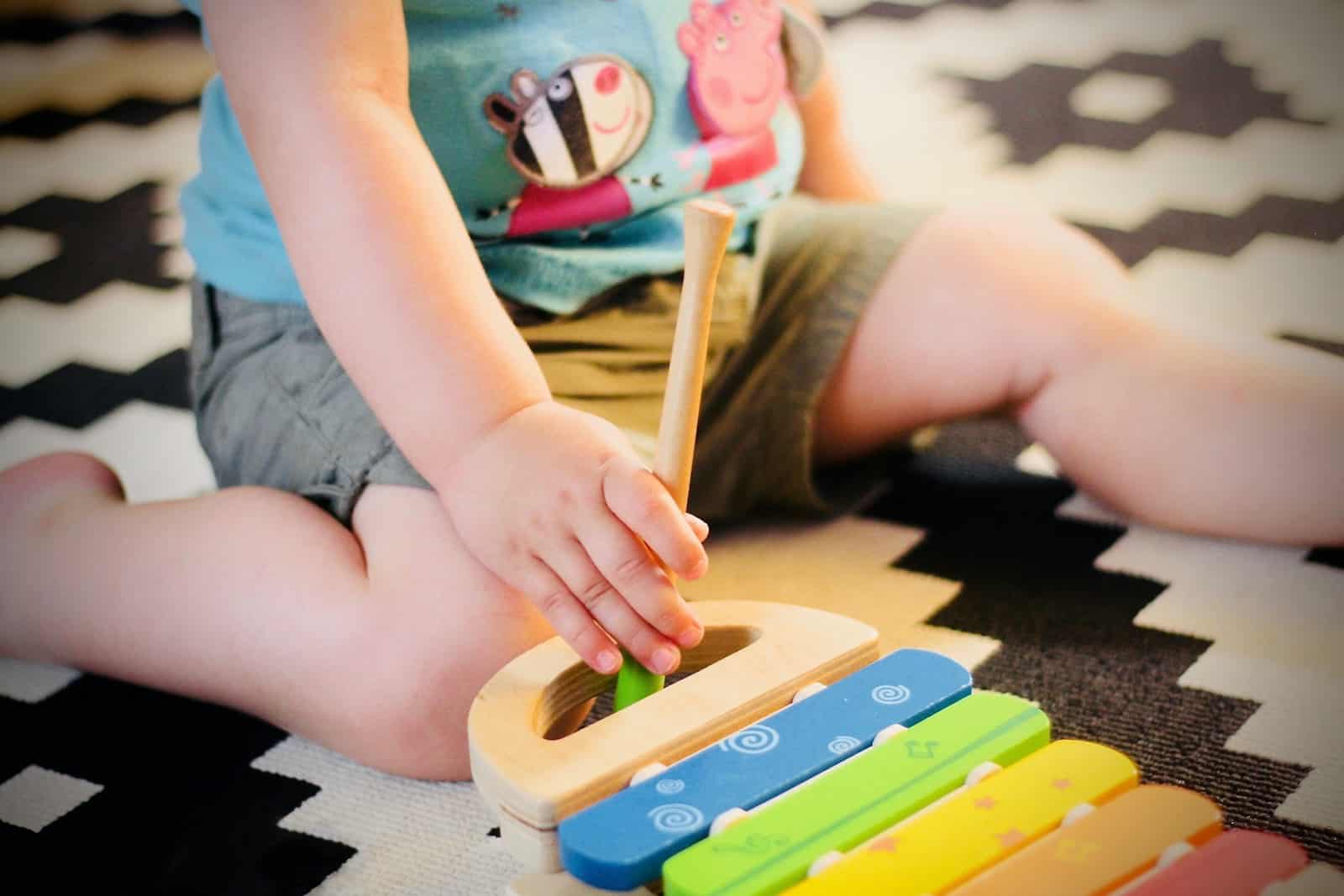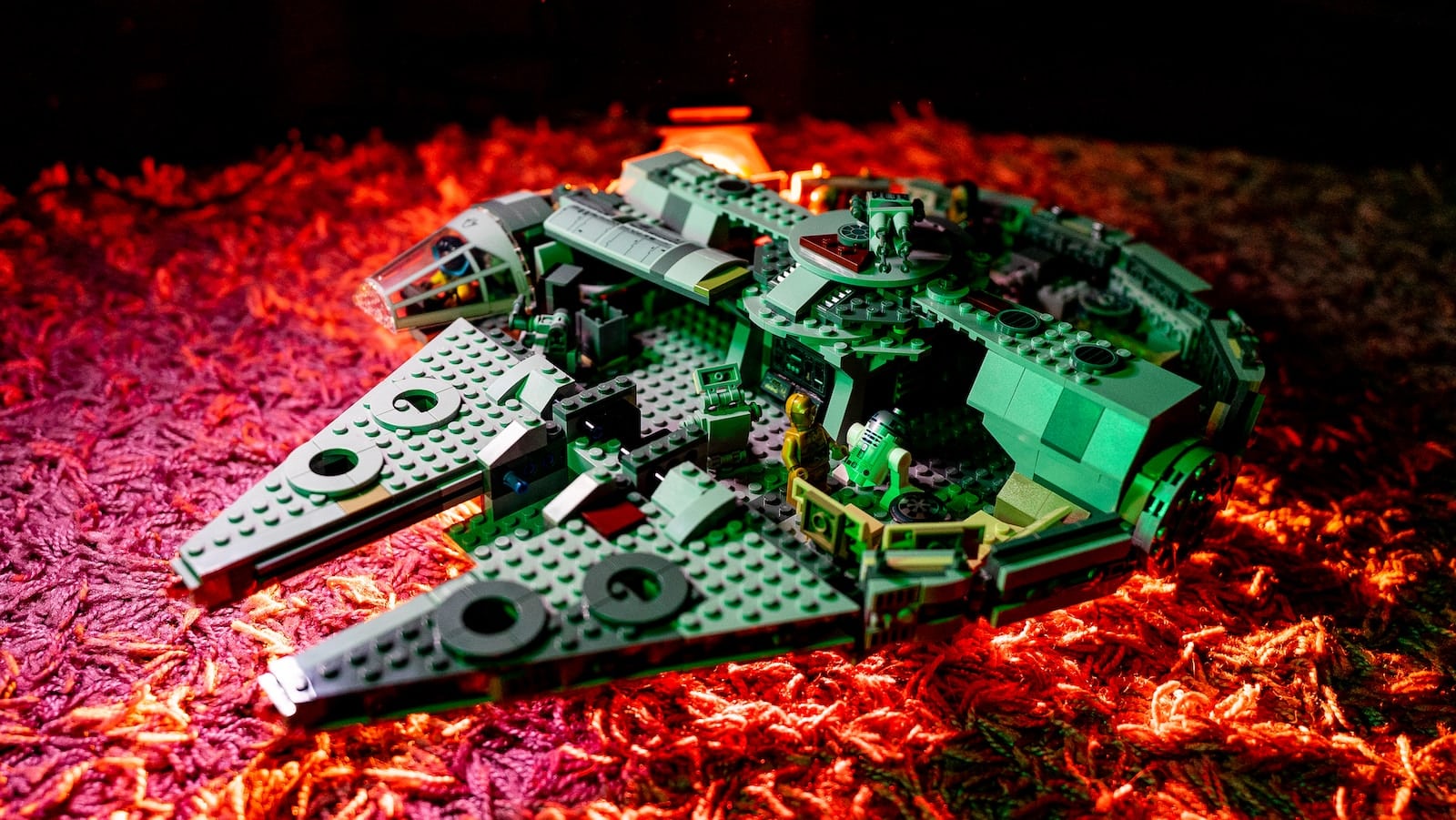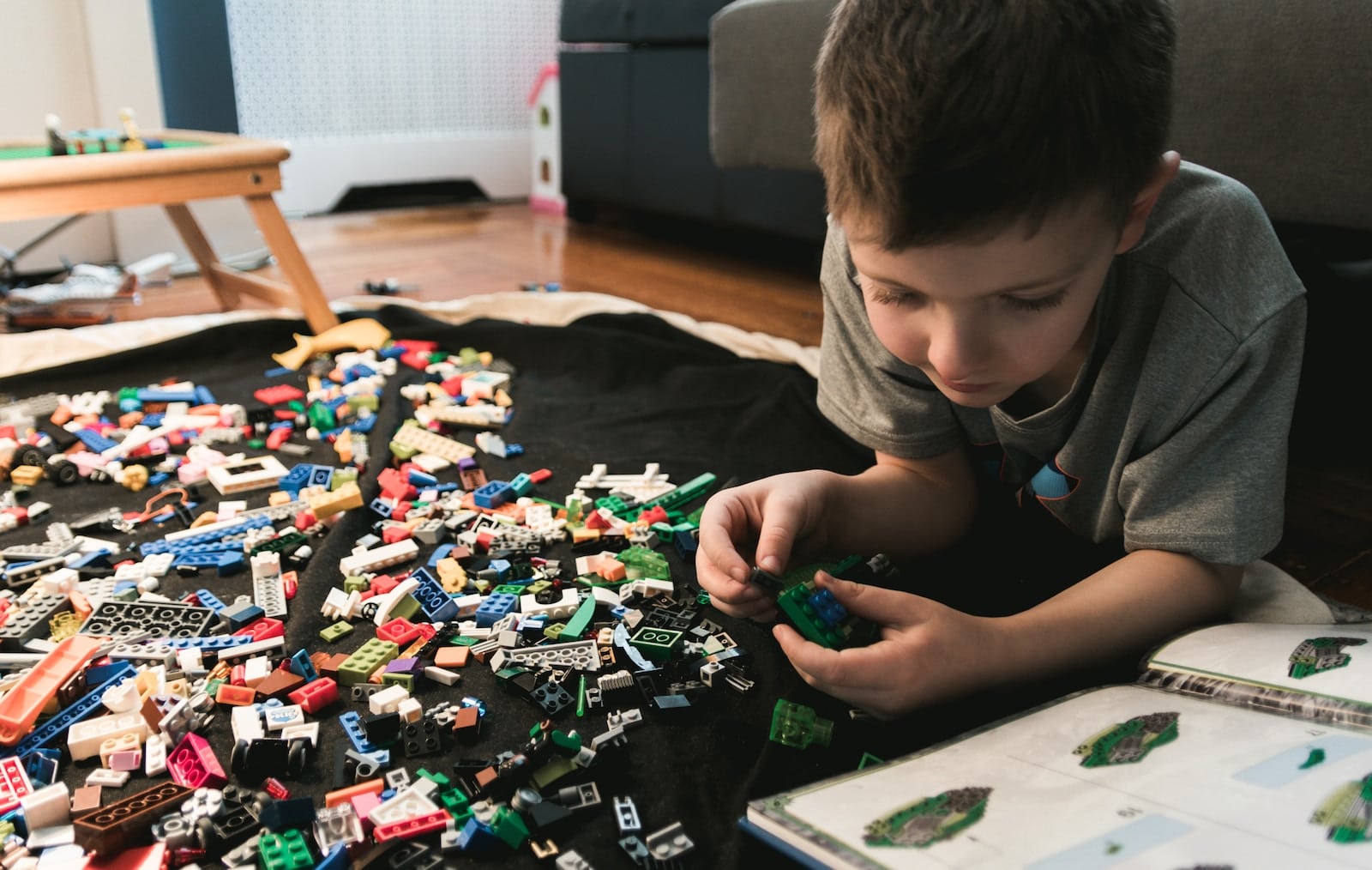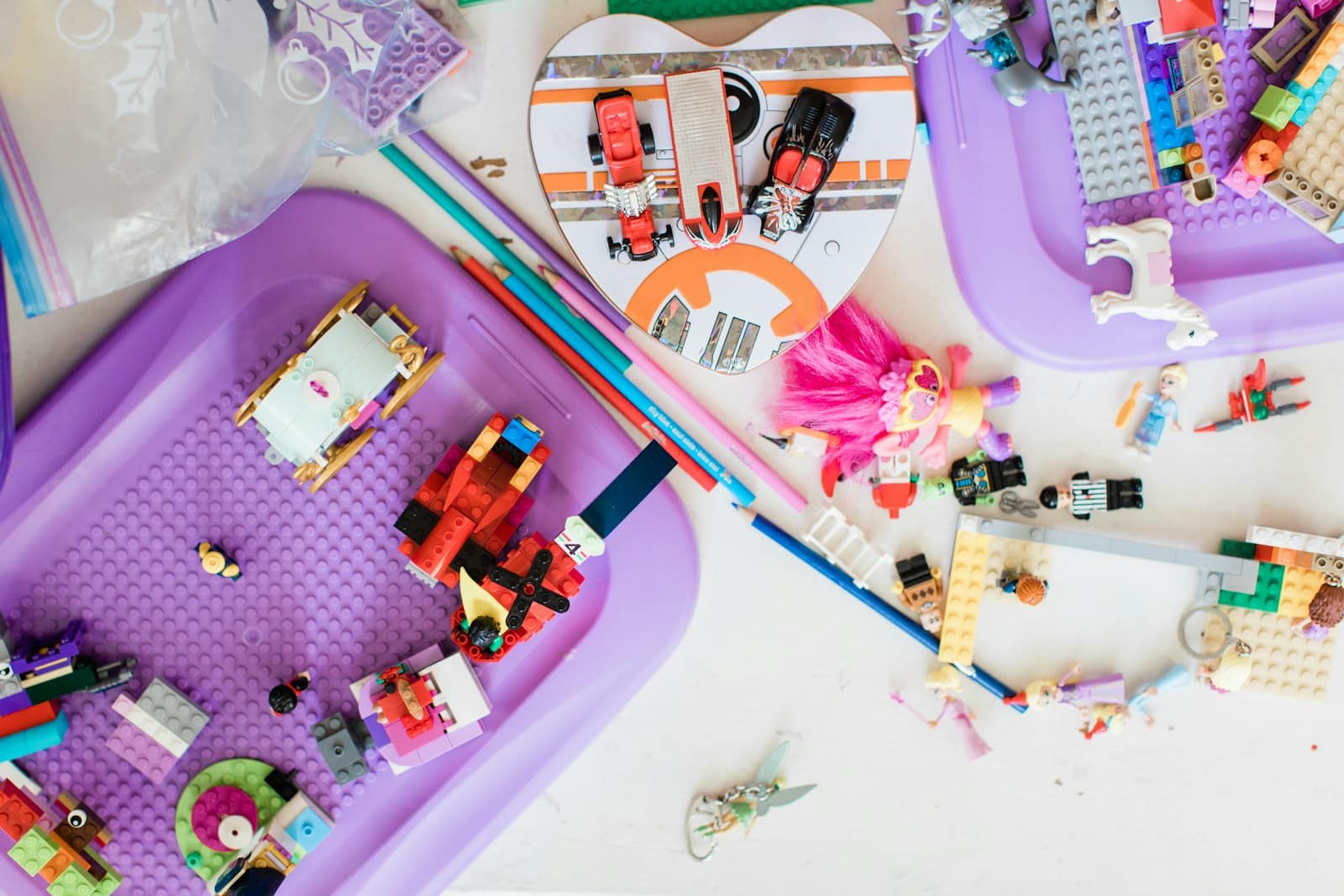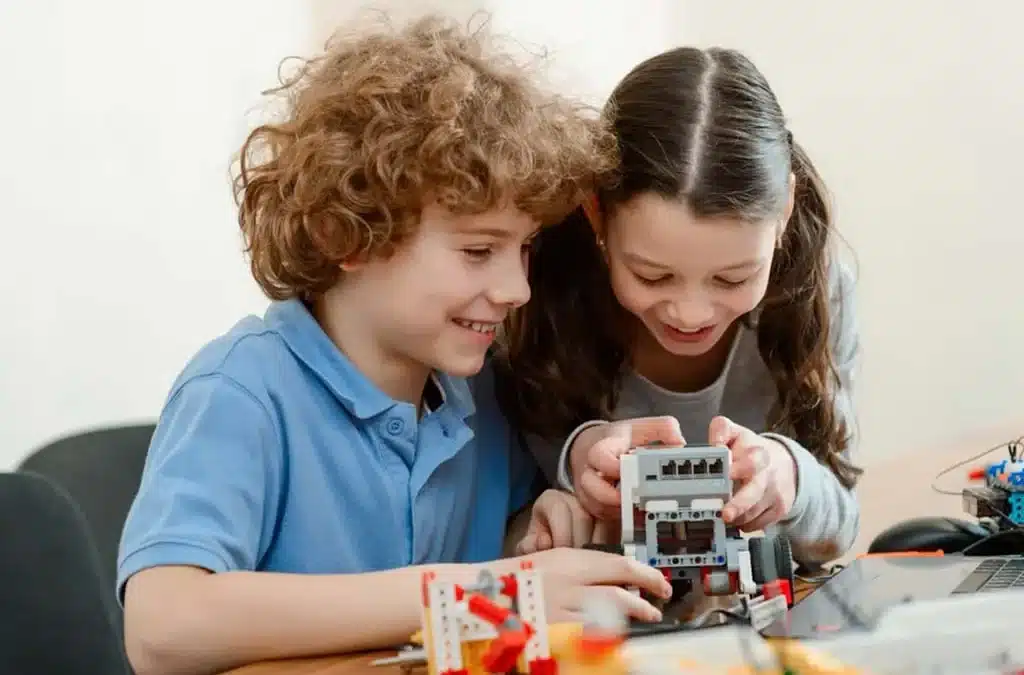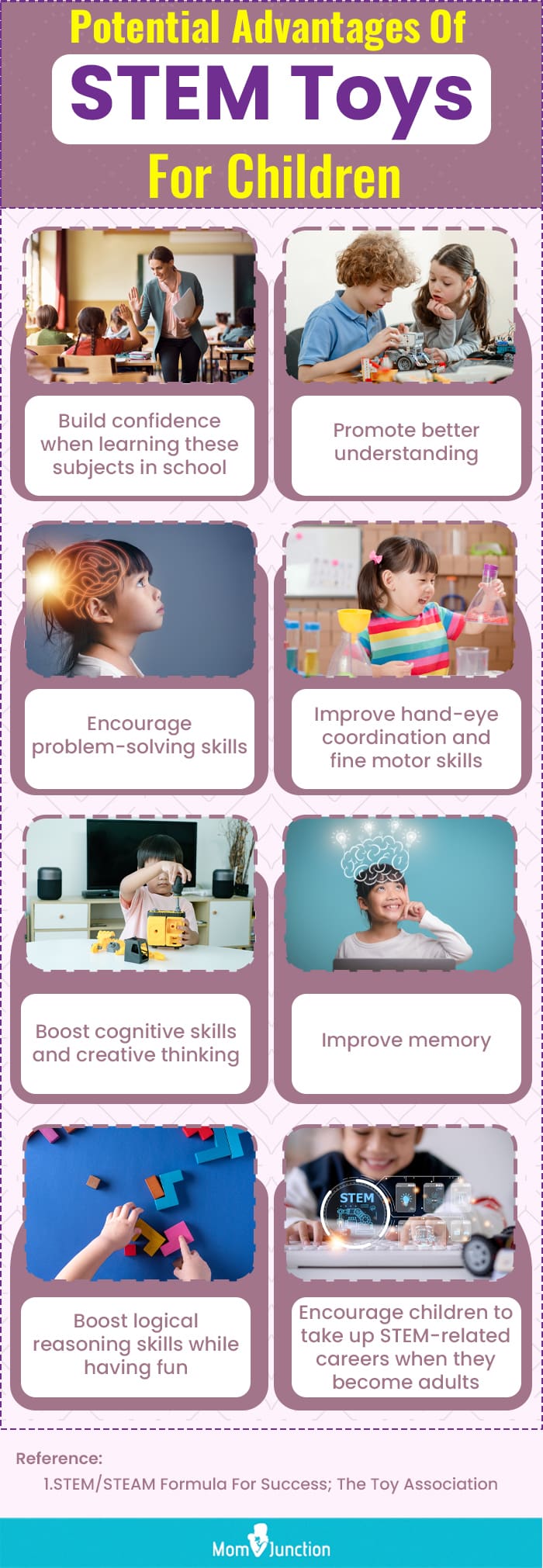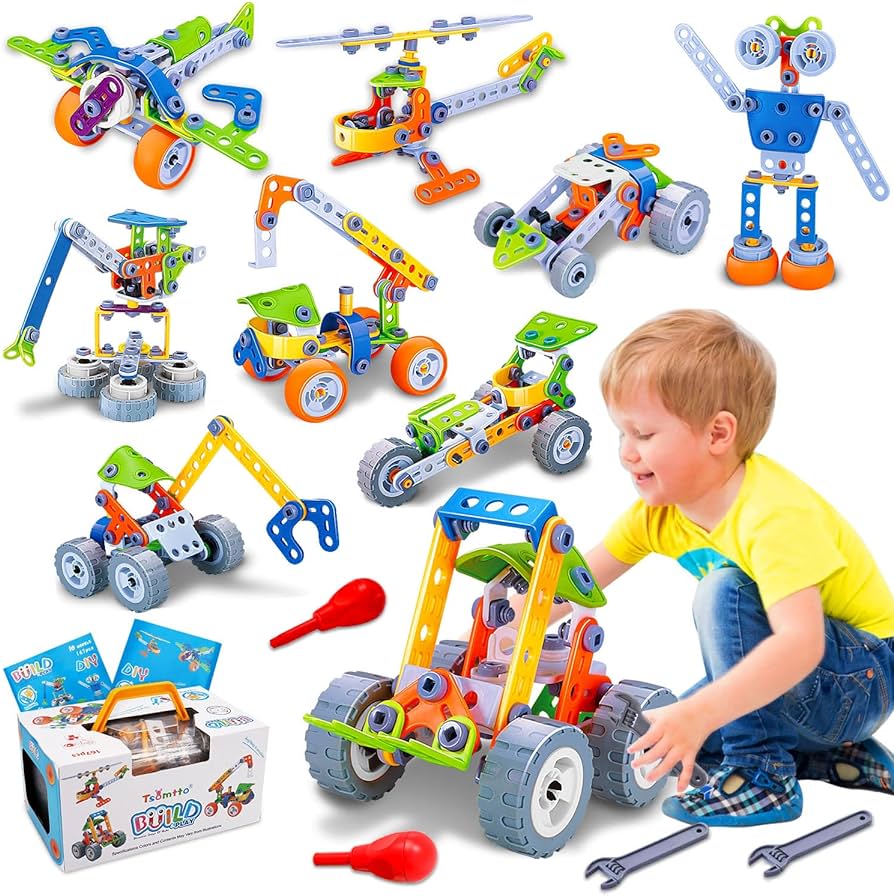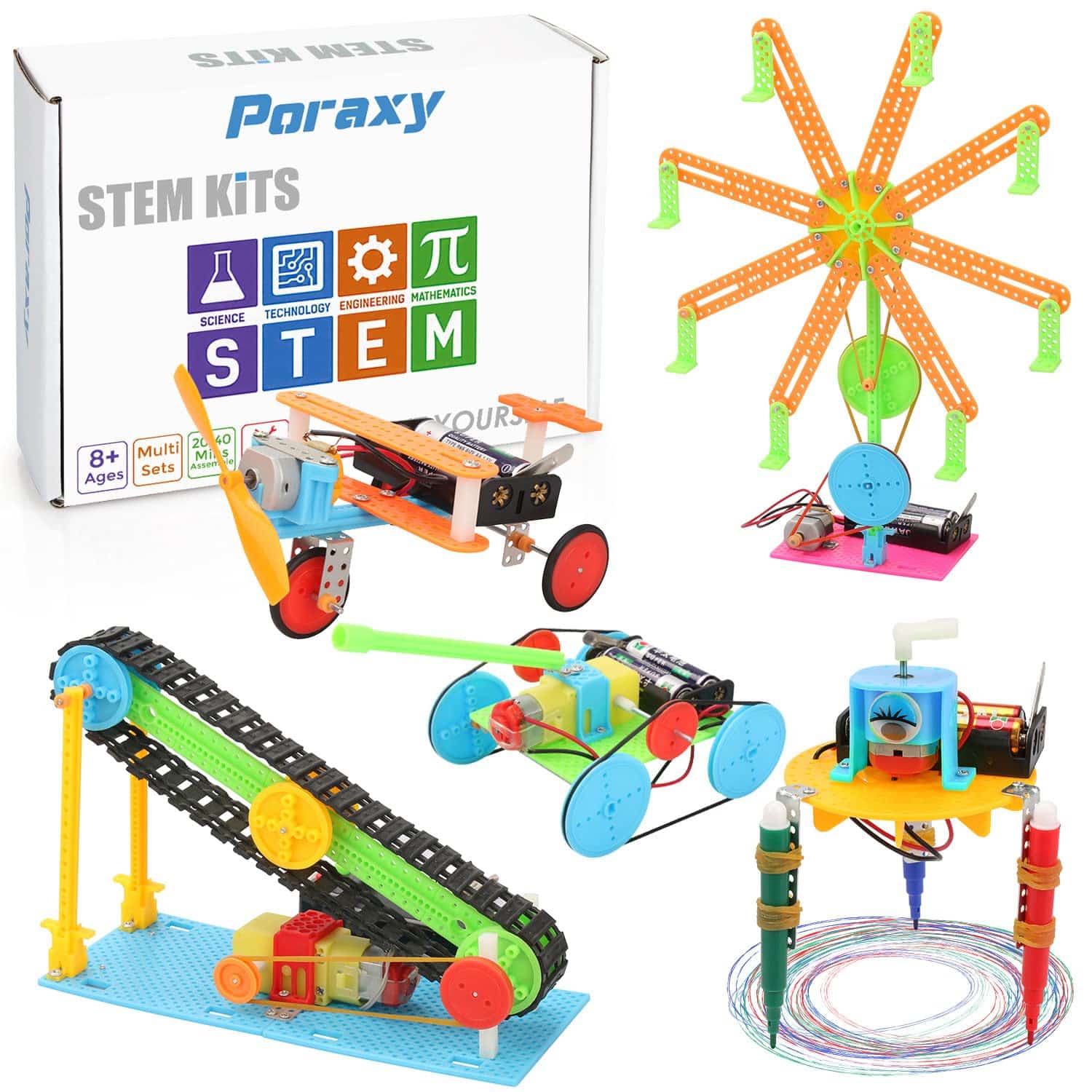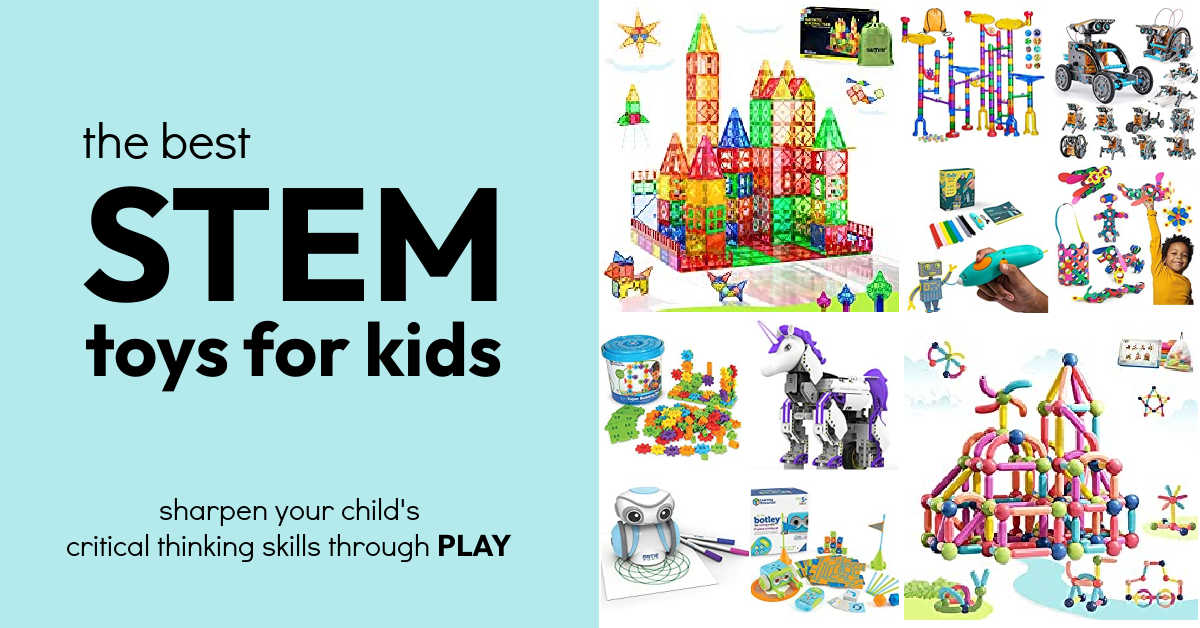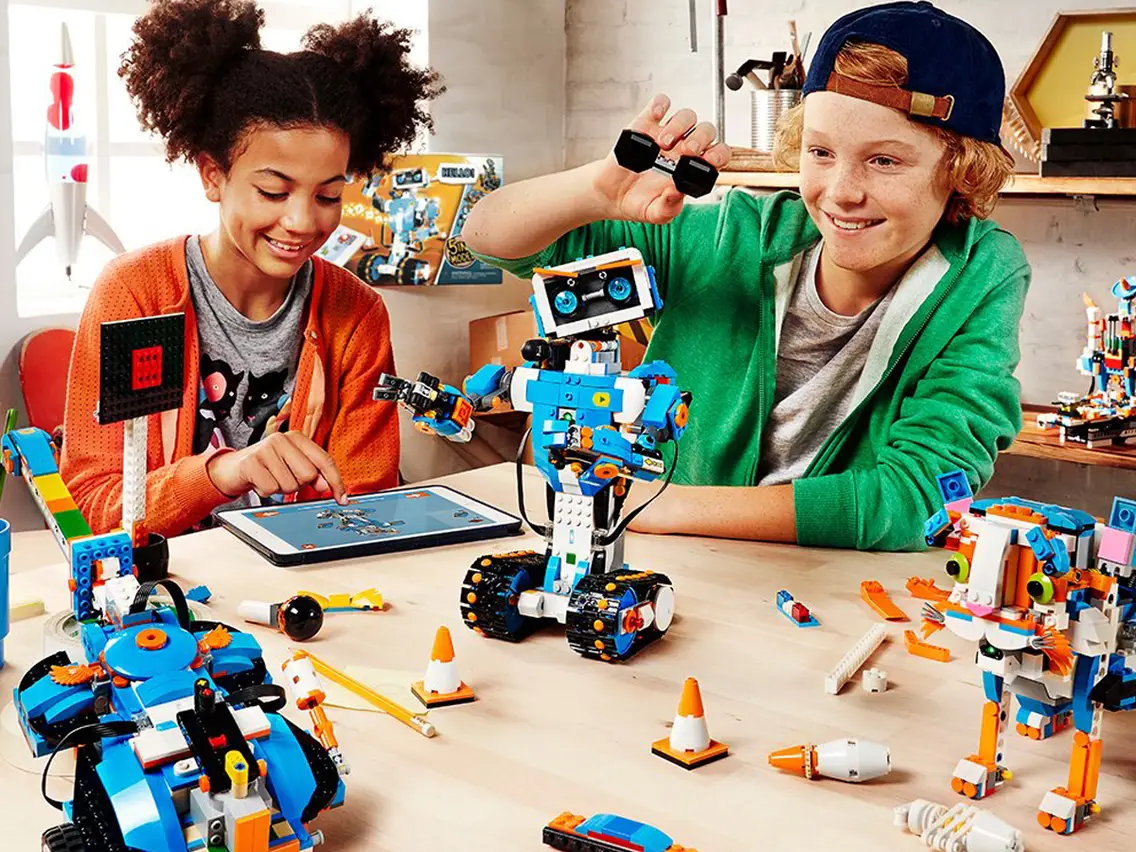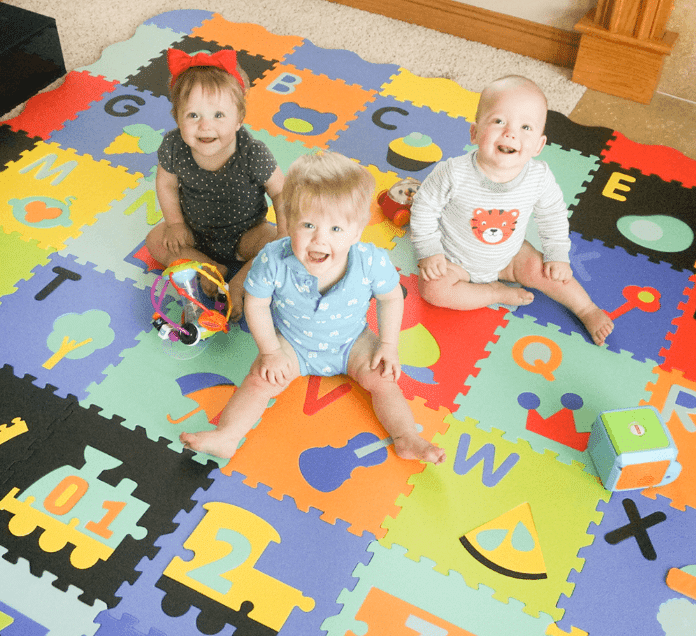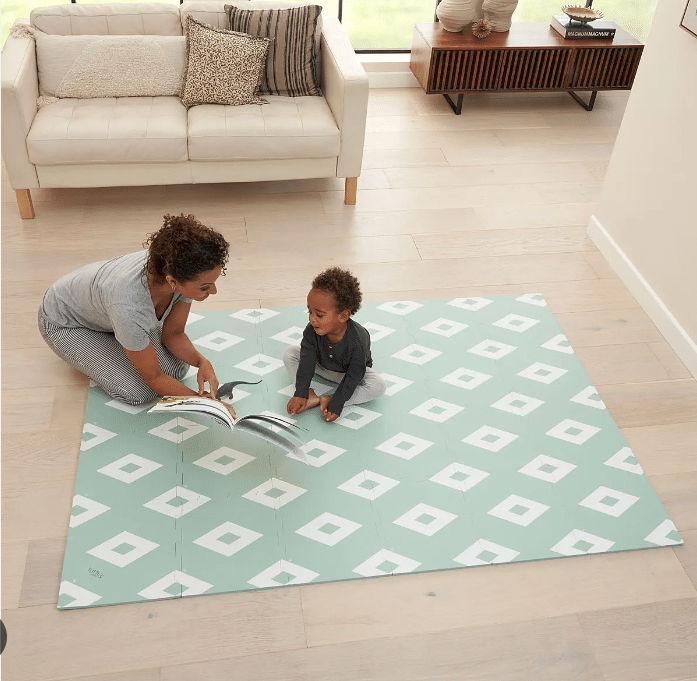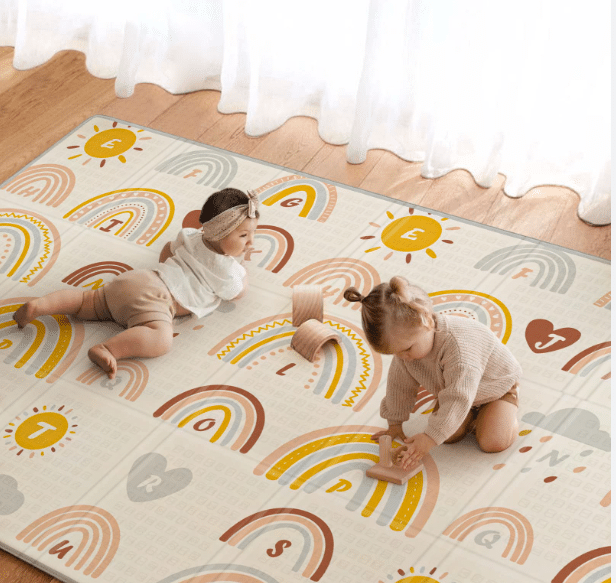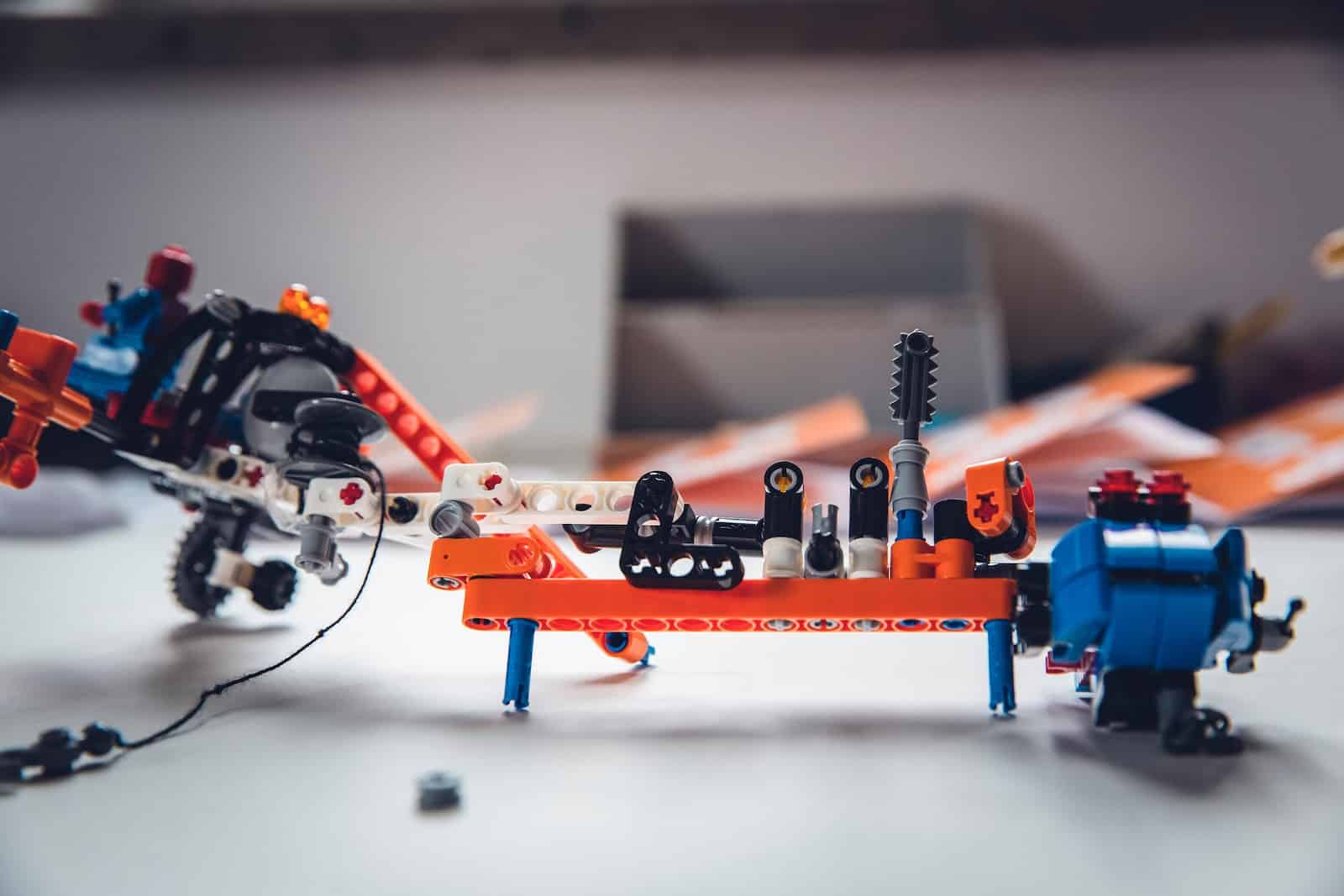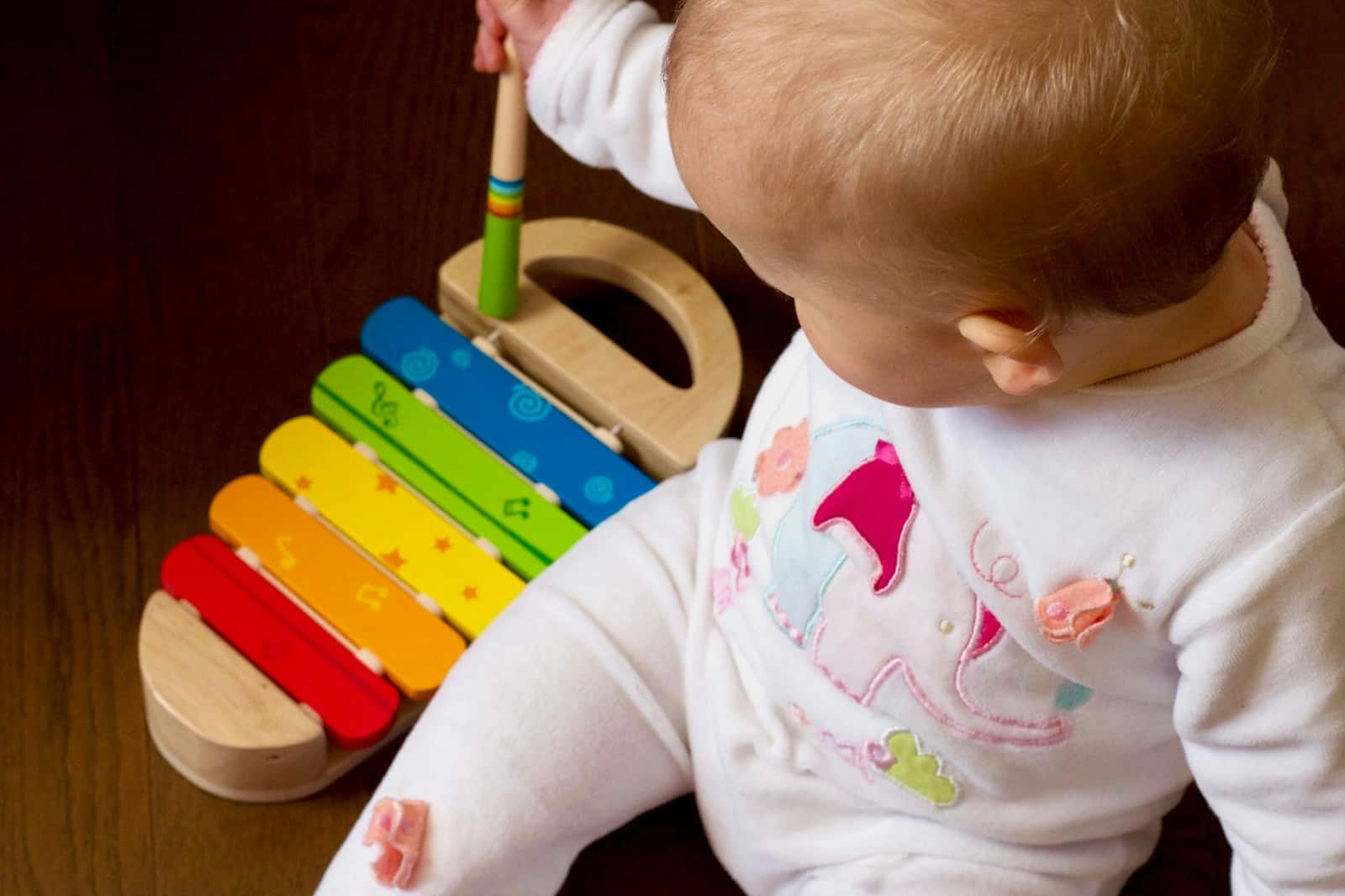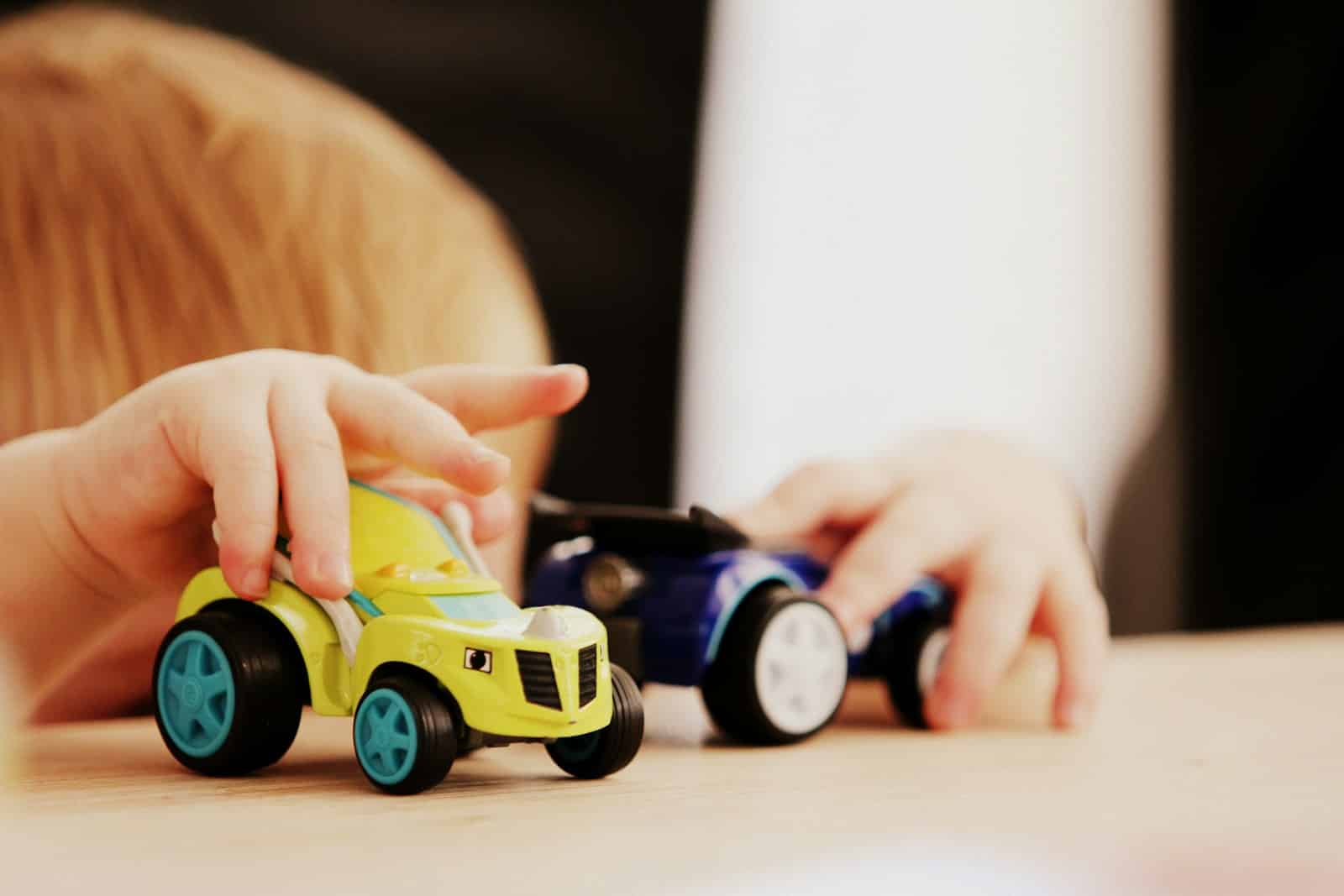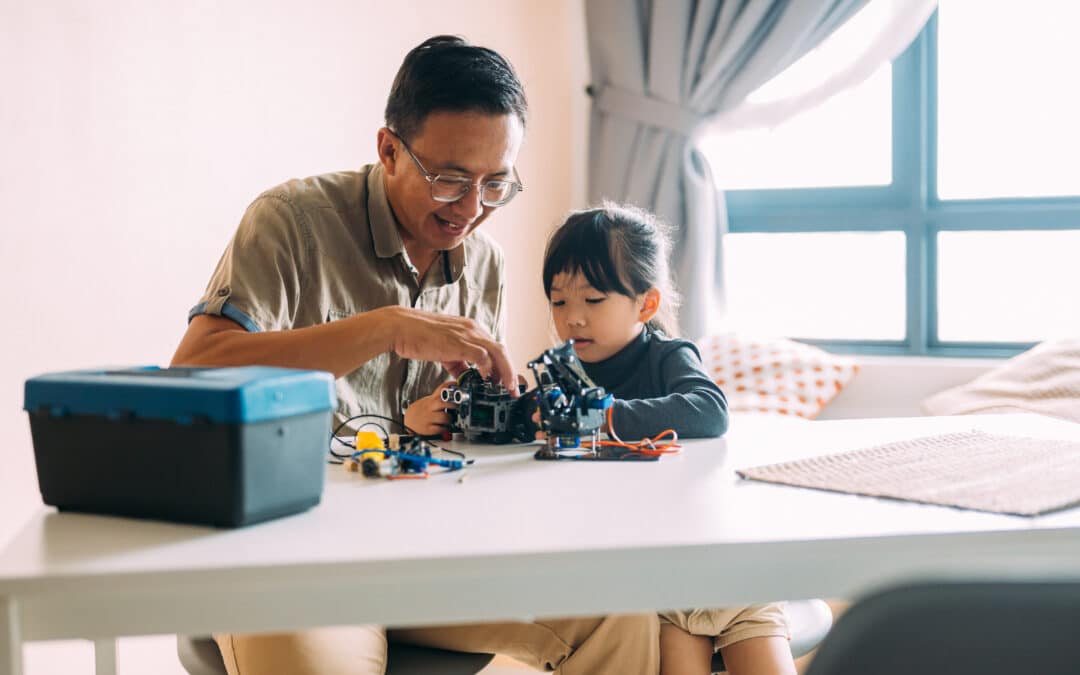Introduction:
STEM (Science, Technology, Engineering, and Mathematics) education empowers child growth. It nurtures children’s curiosity, fosters critical thinking, and prepares them for future advancements in a rapidly evolving world.
Science
Science in STEM education involves observing, experimenting, asking questions, and making predictions. It encourages children to explore the world around them and understand how things work.
Technology
Technology in STEM education promotes inventiveness and problem-solving. It involves using various tools, including computers, to make things work and identify issues. Programming experiences through robotics are a promising tool for integrating technology in early childhood STEM education.
Engineering
Engineering in STEM education is about problem-solving, testing materials, designing, creating, and building. Engineers play a crucial role in inspiring curiosity and creativity in children, making STEM enjoyable and accessible through outreach programs.
Mathematics
Mathematics in STEM education involves patterning, sequencing, and exploring shapes, numbers, volumes, and sizes. A strong foundation in mathematics is central to the success of STEM education. Programs like Mathnasium foster a growth mindset in students, emphasizing that intelligence and abilities in math can be developed through effort and practice.
STEM education goes beyond imparting knowledge; it nurtures life skills such as creative problem-solving, logic, and resilience[11]. It also encourages hands-on learning, which is an effective way to build a child’s confidence. This approach requires teachers to transition from the role of instructor to that of a facilitator, making learning more active and engaging.
Parents and teachers can encourage STEM education by engaging children in diverse projects and activities that foster passion and curiosity for STEM. This includes providing hands-on experiences, strong role models, and exciting problems that motivate children to learn and grow.
STEM Toys and Cognitive Development
STEM (Science, Technology, Engineering, and Mathematics) toys play a significant role in cognitive development in children. They are designed to foster creativity, critical thinking, problem-solving, and interpersonal skills.
These toys go beyond mere entertainment; they offer an interactive and hands-on approach to learning that stimulates critical thinking, problem-solving abilities, and creativity.
One core cognitive ability that develops through STEM interactive toys is defining specific problems. When a child can perceive problems, finding the right solution becomes easier.
STEM toys can enrich children’s cognitive skills, such as logical reasoning, problem-solving, and critical thinking. They also promote creative thinking and allow children to improve their fine motor skills.
STEM toys can be a great way to encourage a child’s natural curiosity. They incorporate science, technology, engineering, and mathematics concepts in an engaging way that is fun for kids of all ages. Examples of STEM toys and activities include building blocks, like Legos or K’Nex, and educational computer games.
STEM toys have a profound impact on early childhood development. They encourage trial and error, experimentation, and problem-solving. Through play, children learn to adapt, overcome challenges, and develop the resilience to navigate a complex world.
They also instil values like patience and perseverance. When children strive to complete a project, they learn the value of sticking with something until they succeed.
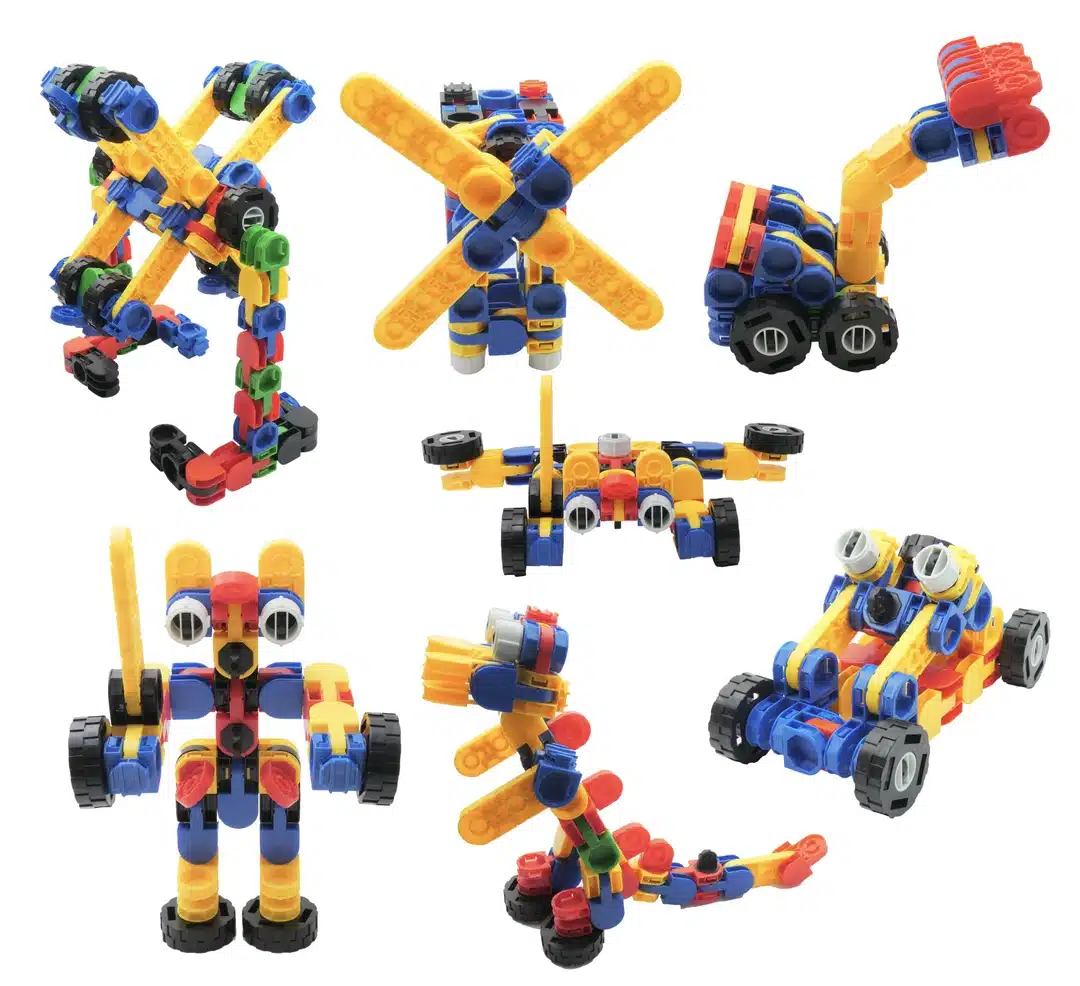
STEM Toys and Language Development
STEM toys can significantly contribute to language development in children. These toys foster creativity, critical thinking, problem-solving, and communication skills.
While playing with STEM toys, children often need to follow instructions, describe their actions, and explain their reasoning. This process can enhance their vocabulary, grammar, and pronunciation skills. For instance, when children interact with others while playing with these toys, they develop communication skills.
STEM toys can also help children understand and use language in context. For instance, when children use programming kits, they learn to write programs, which involves understanding and using specific language related to coding. Similarly, when children play with science kits, they learn scientific terminology and concepts, which can enhance their language skills.
Moreover, STEM toys can help children develop receptive and expressive language skills. Receptive language skills involve understanding the language, while expressive language skills involve using words to express oneself. For example, when children play with educational toys, they learn to follow instructions (receptive language) and describe their actions (expressive language).
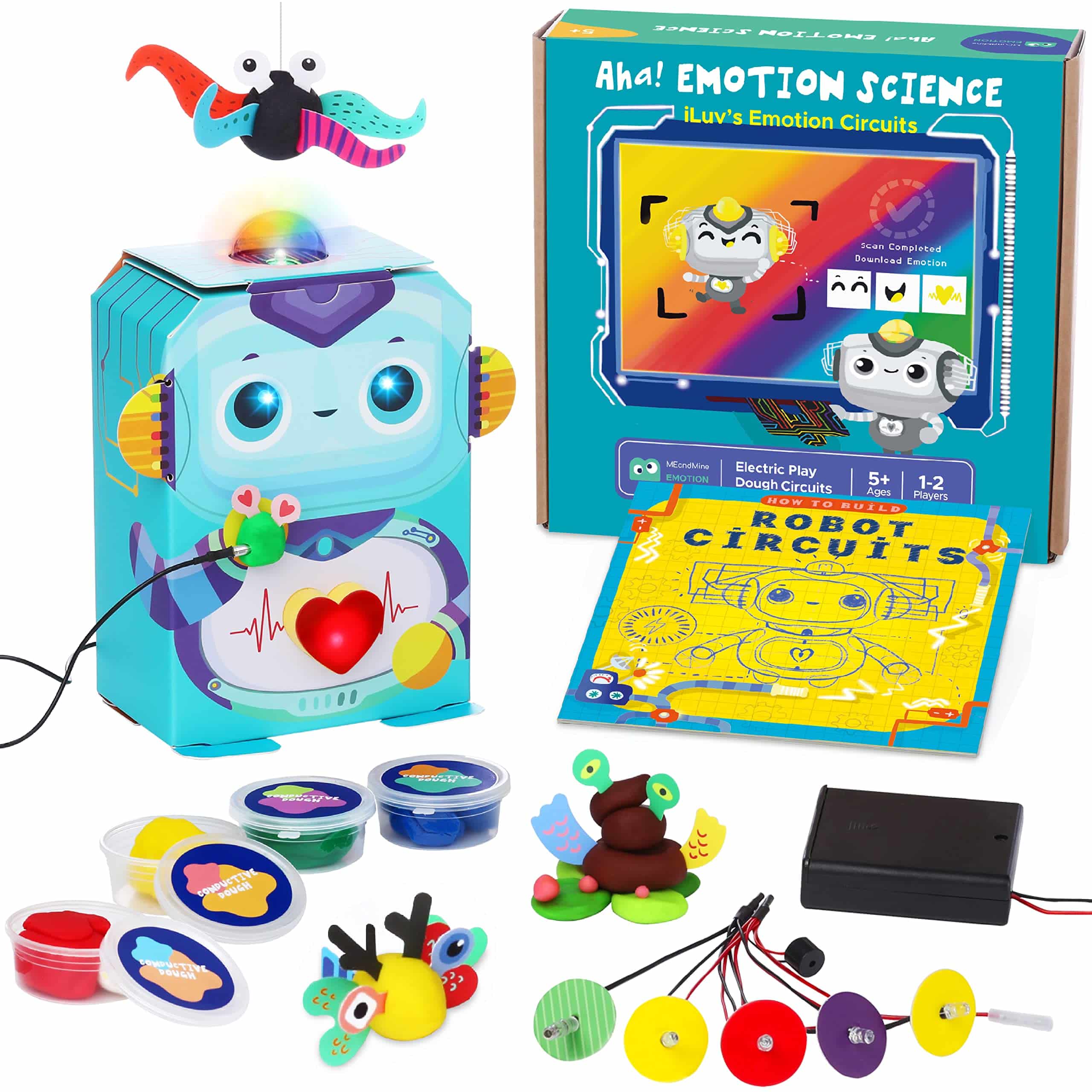
STEM Toys and Physical Development
STEM toys play a crucial role in children’s physical development by enhancing fine and gross motor skills. Fine motor skills involve using small muscles in the hands and fingers. In contrast, gross motor skills involve moving larger muscle groups for activities like crawling, walking, and jumping.
Fine Motor Skills Development
STEM toys often require children to manipulate small parts, which can improve their dexterity and hand-eye coordination. For example, building blocks, puzzles, and construction sets challenge children to precisely pick up, place, and fit together small pieces. This type of play stimulates the brain and refines the motor skills necessary for writing, buttoning clothes, and other daily tasks.
Gross Motor Skills Enhancement
Some STEM toys also promote the development of gross motor skills. For instance, toys involving physical coding or building large structures can encourage children to move around, reach, stack, and balance, enhancing their spatial reasoning and physical coordination.
Encouraging Active Play
Physical STEM toys that are open-ended and allow for child-led play can encourage children to be more active. These toys often have few rules and enable children to use their creativity and problem-solving skills to invent games and activities involving significant physical movement.
Long-Term Physical Benefits
By improving motor skills, STEM toys can benefit children’s physical development. Children gain confidence in their physical abilities as they become more adept at using their hands and bodies. This confidence can encourage them to engage in more complex physical activities and challenges as they grow.
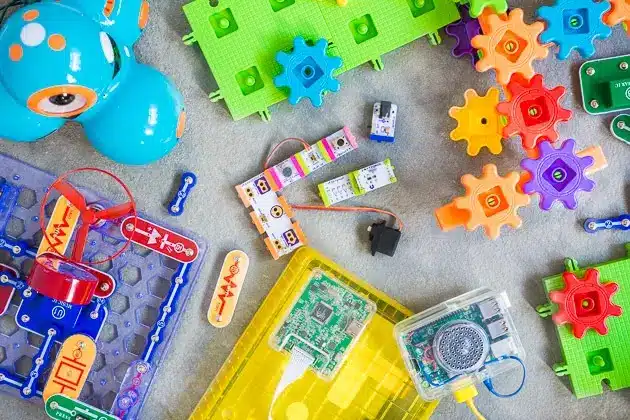
STEM Toys and Social Development
STEM toys can significantly contribute to the social development of children. These toys are designed to foster collaboration, communication, and interpersonal skills, which are crucial for social interaction.
Collaboration and Teamwork
Many STEM toys are designed for collaborative play, encouraging children to collaborate, share ideas, and solve problems collectively. For instance, building complex structures, working on engineering projects, or participating in group coding activities can promote teamwork. This collaborative play mirrors real-world scenarios in STEM fields, helping children understand the importance of teamwork and cooperation.
Communication Skills
Playing with STEM toys often requires children to communicate their ideas and strategies, which can enhance their verbal and non-verbal communication skills. For example, when children collaborate to build a structure or solve a problem, they must express their thoughts clearly and listen to others’ ideas. This process can improve their speaking, listening, and comprehension skills.
Interpersonal Skills
STEM toys can also help children develop essential interpersonal skills. These skills include empathy, negotiation, conflict resolution, and leadership, which are crucial for successful social interactions. For instance, when children play together with STEM toys, they may need to negotiate roles, resolve disagreements, and lead or follow others.
Confidence and Self-Esteem
Playing with STEM toys can boost children’s confidence and self-esteem. As children overcome challenges and solve problems, they gain a sense of accomplishment, enhancing their self-confidence. This confidence can, in turn, improve their social interactions and relationships.
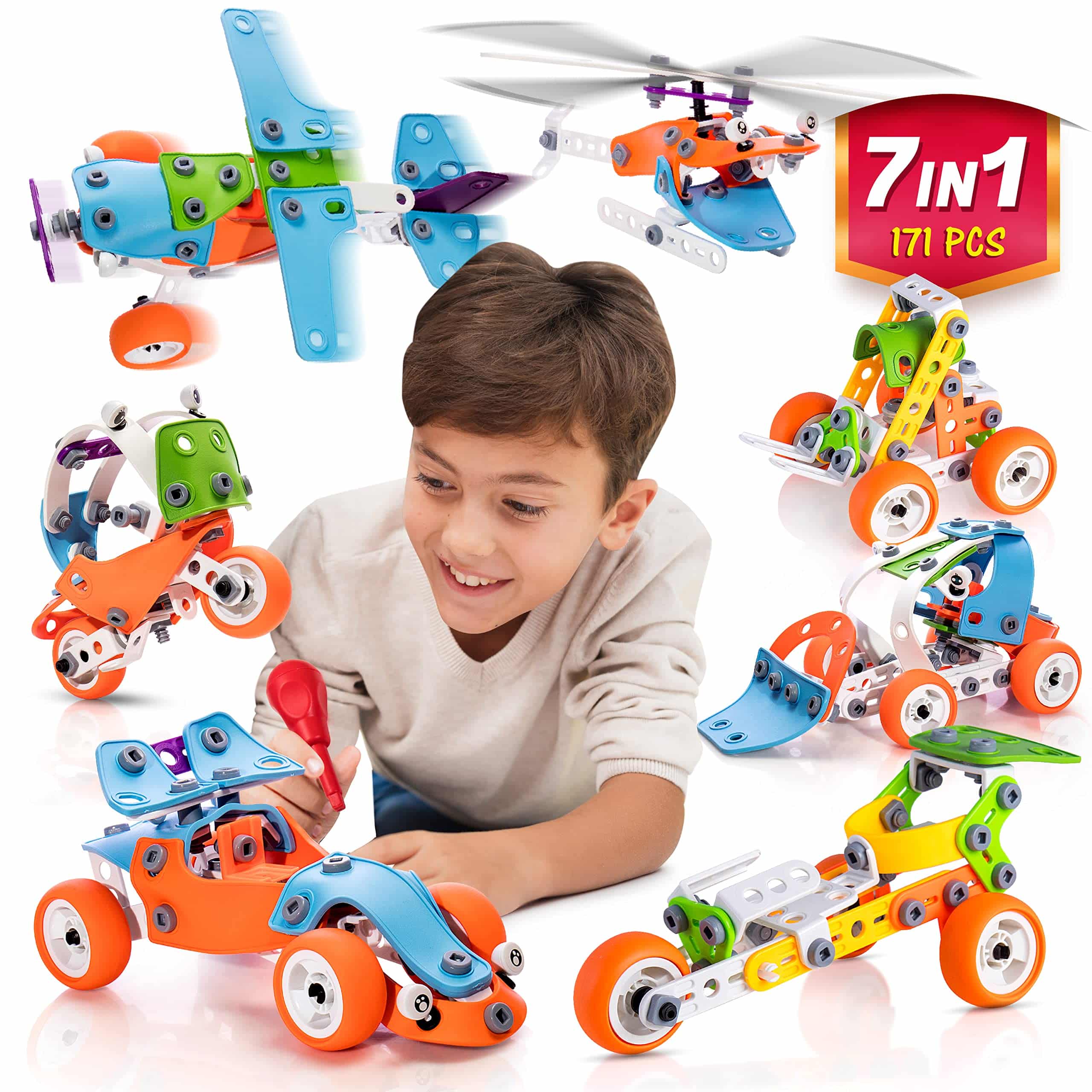
STEM Toys and Emotional Development
STEM toys can significantly contribute to the emotional development of children. They foster resilience, promote self-expression, and help children understand and manage their emotions.
Resilience and Problem-Solving
STEM toys encourage resilience through trial and error. They allow children to make mistakes and learn from them without fear of judgment, providing a safe environment where failure is seen as a stepping stone towards success. For instance, the Smartivity Try Tower is a toy that helps children become resilient and cope better with failure.
Self-Expression and Creativity
STEM toys also nurture self-expression and creativity. They inspire children to explore and express their unique ideas through hands-on play. For example, the MEandMine Emotion Science kit allows children to learn about emotions and how our body responds to them, promoting self-expression.
Emotional Understanding and Management
Some STEM toys are designed to help children understand and manage their emotions. For example, the MeAndMine Activity Kits include self-worth, decision-making, and emotional intelligence. These kits help children identify strong emotions and work through their feelings. Similarly, the Smartivity Try Tower comes with emotion badges to help children cope with their emotions after each trial.
Confidence
Playing with STEM toys can also boost children’s confidence. As they overcome challenges and solve problems, they gain a sense of accomplishment, which can enhance their self-confidence.
In summary, STEM toys contribute to emotional development by fostering resilience, promoting self-expression and creativity, helping children understand and manage their emotions, and boosting confidence. These toys provide a platform for children to learn and practice essential emotional skills in a fun and engaging way.

Types of STEM Toys and Selection
STEM (Science, Technology, Engineering, and Mathematics) toys are designed to foster learning and development in children. They come in various types and are suitable for different age groups. When selecting a STEM toy, it’s important to consider the child’s age, interests, and skill level.
Types of STEM Toys
- Basic STEM Toys: These include wooden building blocks, colored-ring stacks, magnetic tiles, and shape sorters. Ideal for preschoolers and below, these toys teach basic concepts like counting numbers, identifying colours, and spatial reasoning.
- Microscopes and Telescopes: These toys allow children to explore the natural world in detail, fostering curiosity and scientific thinking.
- Robot Kits: Popular among older children, these kits allow children to build robots from scratch, challenging their minds to code and write programs.
- Programming Kits: These kits empower children to write programs for real-world applications, fostering logical reasoning and problem-solving skills.
- Sensory Toys: For babies and toddlers, sensory toys that focus on stimuli such as touch and sound are great for building strength, motor skills, balance, and language.
- Educational Games: These games can help children develop patience for trial and error, identify problems, and find solutions, mimicking the logical reasoning used in computer programming.
Selecting the Right STEM Toy
When choosing a STEM toy, consider the following factors:
- Age Appropriateness: Select toys that fall within your child’s age group or slightly ahead to give them something to work towards. Most toys come with a recommended age range within the product specifications.
- Interest Alignment: Consider your child’s interests. If they love spaceships, dinosaurs, or a certain cartoon character, look for STEM toys that incorporate these elements.
- Complexity Level: Start with straightforward toys, especially for beginners. More complex toys can be introduced as the child’s understanding and skills develop.
- Quality and Safety: Ensure the toy is high quality and safe for the child to use.
- Engagement Level: The toy should be engaging and fun for the child. If they enjoy playing with the toy, they are likelier to learn from it.
Educational Benefits of Creative STEM Play
Creative STEM (Science, Technology, Engineering, and Mathematics) play offers numerous educational benefits for children. These benefits span cognitive, social, and emotional domains, fostering a holistic approach to learning.
Cognitive Benefits
1. Critical Thinking and Problem-Solving: STEM activities teach children to think critically and solve problems. These skills are not only applicable to STEM subjects but are also transferable to various life situations.
2. Innovation and Creativity: STEM play encourages innovative thinking and creativity. Children are often tasked with designing solutions to complex problems, which requires them to think outside the box.
3. Understanding Real-World Applications: STEM play helps children understand the real-world applications of science, technology, engineering, and math. This understanding can spark their interest in these fields and show them how these concepts are used in everyday life.
Social and Emotional Benefits
1. Collaboration and Communication: STEM activities often involve teamwork, which helps children develop collaboration and communication skills. They learn to work together, share ideas, and give and receive feedback.
2. Persistence and Resilience: STEM play involves a lot of trial and error, teaching children to be persistent and resilient. They learn that failure is a part of the learning process and that it’s okay to make mistakes[5].
3. Confidence Building: Successfully solving problems or completing projects during STEM play can boost children’s confidence. They gain a sense of accomplishment, encouraging them to take on more challenges.
Selecting STEM Activities for Creative Play
When choosing STEM activities for creative play, consider the child’s age, interests, and skill level. Activities should be engaging, fun, and slightly challenging to keep the child interested and promote learning. They should also align with the child’s interests to ensure they remain engaged and motivated.
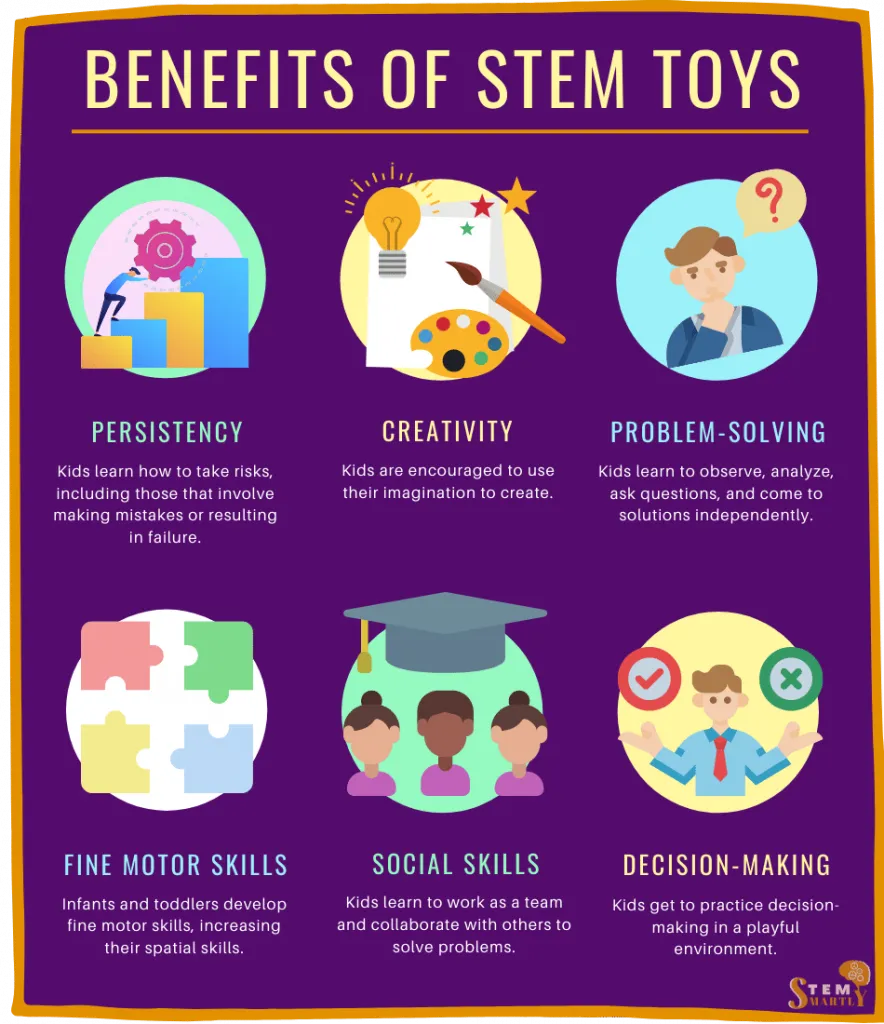
Conclusion
As we reach the end of our exploration into the world of STEM toys, it’s clear that these innovative tools offer far more than just entertainment. They are a powerful means of fostering a love for learning and nurturing a wide array of skills crucial for a child’s holistic development.
This guide shows how STEM toys can enhance cognitive abilities, from logical thinking to problem-solving. We’ve discovered their role in language development, expanding vocabulary, and improving communication. We’ve also delved into their contribution to physical development, promoting fine and gross motor skills.
Moreover, we’ve highlighted the social benefits of STEM toys, from fostering cooperation and teamwork to teaching children about sharing and conflict resolution. And let’s not forget their impact on emotional development, helping children navigate the ups and downs of success and failure, building resilience, and boosting confidence.
But the most significant takeaway is the realization that STEM toys are not just about teaching science, technology, engineering, or mathematics. They are about sparking curiosity, encouraging creativity, and instilling a lifelong love for discovery. They are about preparing our children for a future where these skills will be more important than ever.
As parents and educators, our role is to provide these tools and guide our children in using them. We can unlock their full potential and empower our children’s growth by choosing the right STEM toys and integrating them thoughtfully into play and learning.
In conclusion, STEM toys are more than just playthings. They are the keys to unlocking a world of learning and discovery, setting the foundation for a brighter future. So, let’s embrace these tools and witness the incredible growth journey they can inspire in our children.
FAQ
1. What exactly are STEM toys?
STEM toys are educational tools that promote learning in Science, Technology, Engineering, and Mathematics. They are designed to engage children in activities that stimulate their minds and encourage hands-on learning. These toys can range from building sets and coding robots to science experiment kits, all aimed at fostering critical thinking, problem-solving skills, and a love for learning.
2. When should children start playing with STEM toys?
There’s no hard and fast rule about when children should start playing with STEM toys. These toys are designed for all age groups, from infants to teenagers. The key is to choose developmentally appropriate toys that align with the child’s growing abilities and interests. For instance, toddlers might enjoy simple building blocks, while older children might be ready for more complex toys like coding robots or science kits.
3. How do STEM toys support language development?
STEM toys often come with instructions that require reading and understanding, which can enhance a child’s vocabulary and comprehension. They also encourage children to ask questions, express their thoughts, and communicate their ideas, all contributing to language development. For example, a child playing with a science experiment kit might need to follow written instructions, ask questions about the experiment, and explain their observations, which involve using and developing language skills.
4. Can STEM toys help with social development?
Absolutely. Many STEM toys are designed for cooperative play, which can teach children about teamwork, empathy, and the social dynamics of working with others to achieve a common goal. For instance, a group of children working on a robotics project will need to communicate effectively, delegate tasks, and work together to achieve their common goal, all of which are important social skills.
5. Where is the best place to find STEM toys for my child?
STEM toys can be found in various retail stores, educational supply shops, and online marketplaces. When selecting a STEM toy, it’s important to consider its educational value, safety, and whether it aligns with your child’s interests. Look for well-made toys with good reviews designed with children’s learning in mind. The article provides further guidance and resources for choosing the right STEM toys.
